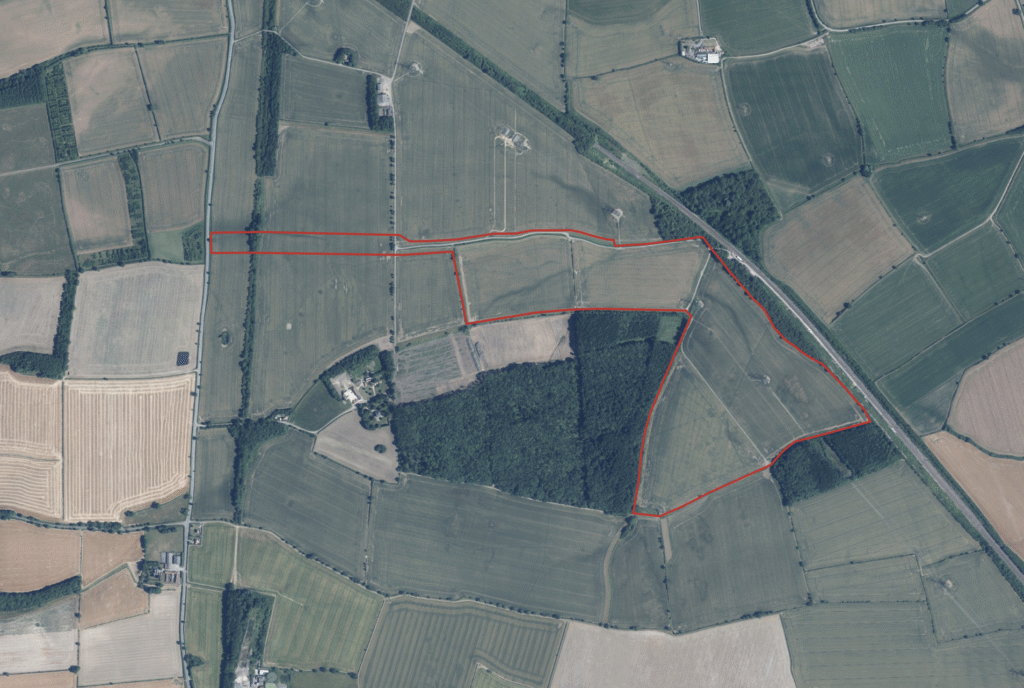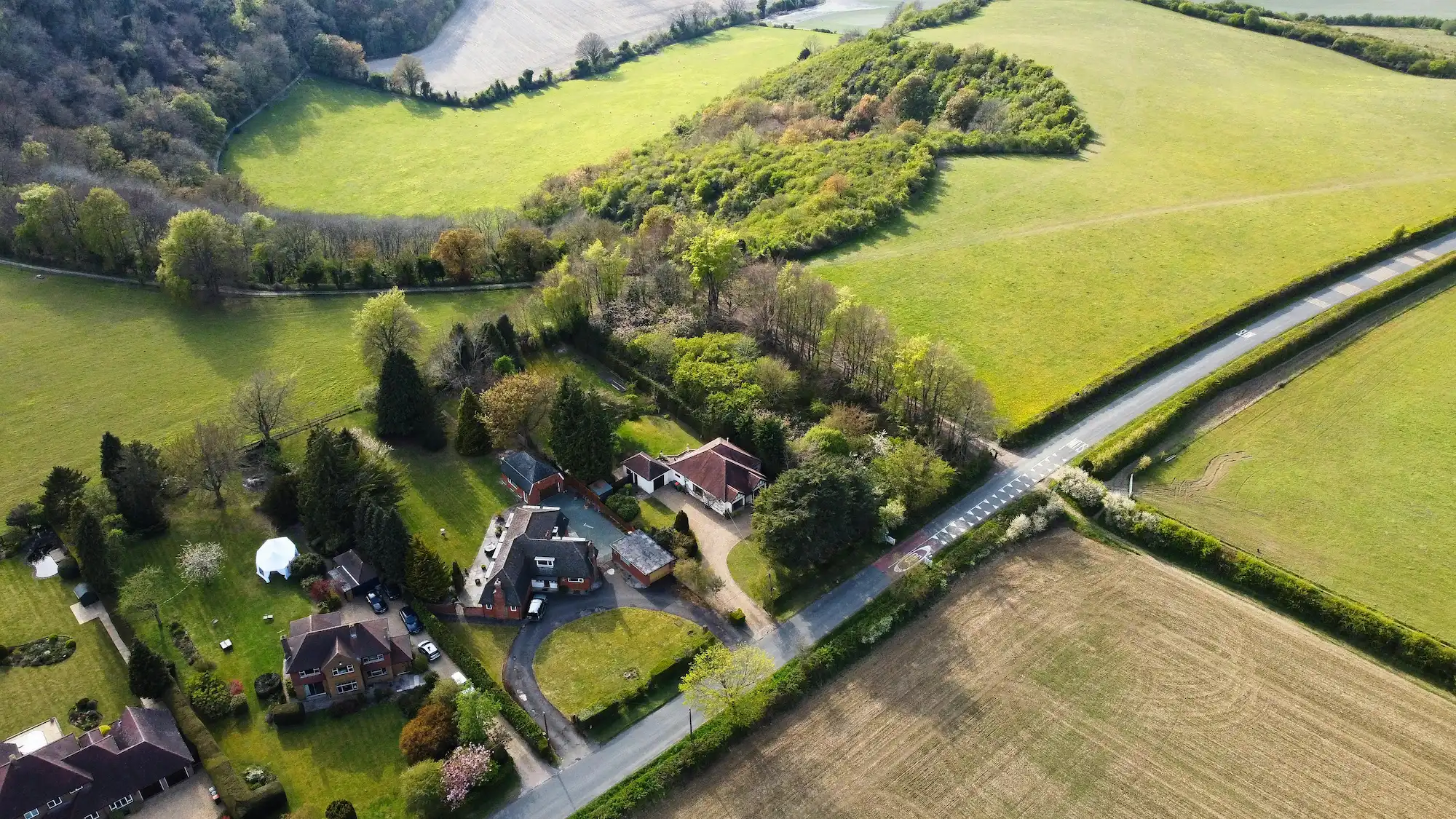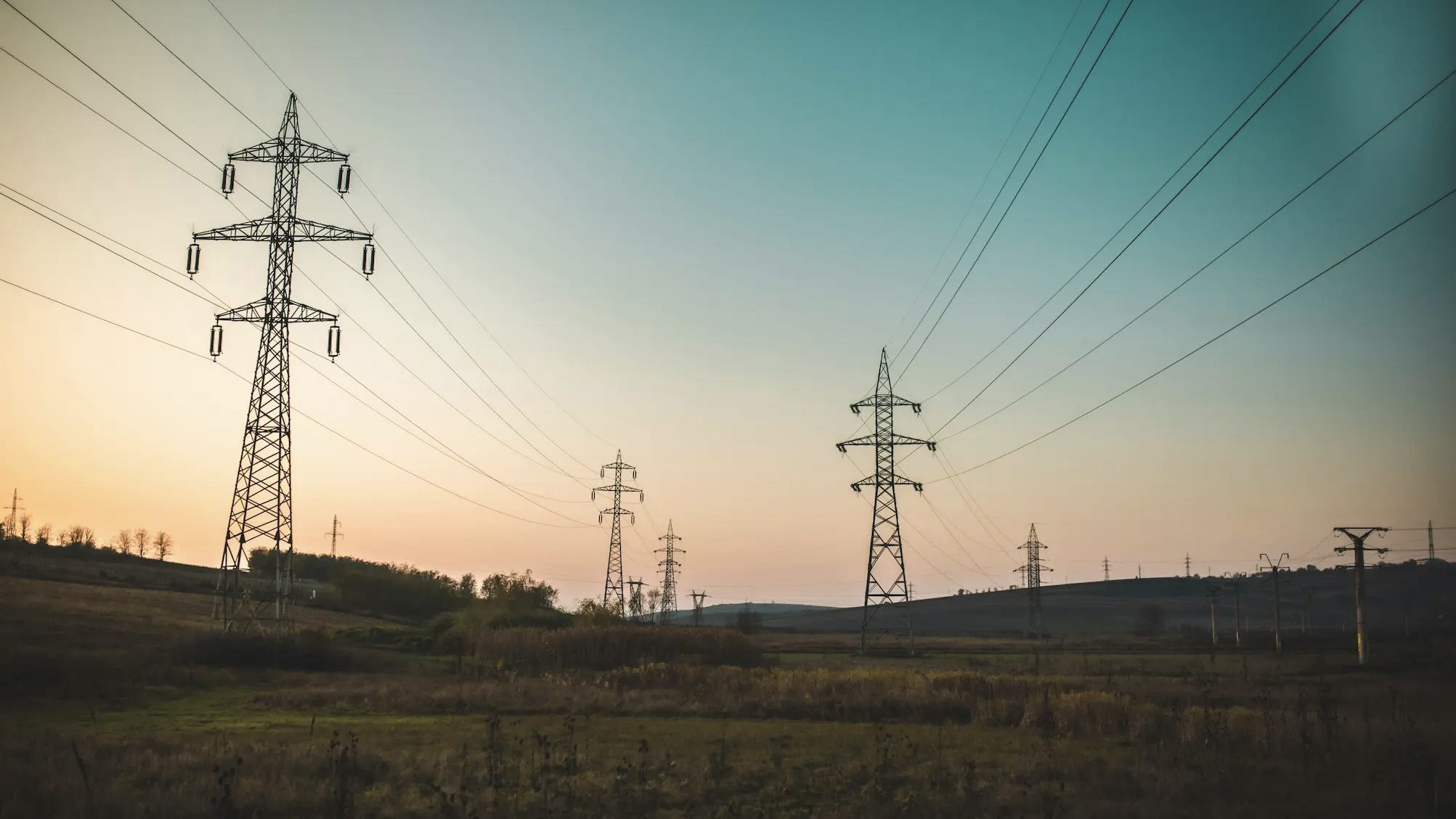
PUBLIC CONSULTATION
Have your say
This site map shows our proposed project boundary and access (red line). In selecting the site, we have ensured there is enough suitable land for development while also allowing parts of the site to be used for landscaping and ecological enhancements.
Feedback from the community, along with our ongoing environmental assessments and technical work, is helping to inform our plans for Canner’s Lane Energy Park.
All the information published as part of our public consultation is available here. We are continuing to welcome feedback on our plans.

March 2025
Public consultation
We launched our public consultation on 17 March 2025, which included an event at Great Ponton Village Hall on 31 March 2025.
We are continuing to accept feedback (see below) on our proposal up until we submit our planning application to South Kesteven District Council.
South Kesteven District Council will then conduct its own statutory consultation before determining the application.
We are also engaging with South Kesteven District Council to agree our proposed approach to assessing environmental effects and share the results of our early assessments (called a ‘screening request).

July 2025
Post public consultation feedback
We would like to thank all members of the public who provided their comments to Natpower as part of the consultation process. We have taken time to fully consider the feedback over the last couple of months and can now provide an updated design. Below we have summarised the changes to the scheme and provided an updated Master Plan in the documents section of the website.
Changes to Scheme
• Relocated a significant proportion of the battery units from the undulating northern corner to south west of the customer substation, removing the need for large retaining walls while also widening the attenuation pond. In addition, by removing these containers the site is now split into a northern and southern parcel without fencing in between which will allow deer and other animals to cross the site from Stoke Park Wood to the Network Rail woodland embankment without having to traverse around the whole perimeter;
• Incorporated a shorter customer and transmission substation, lowering the towers connection height to the pylon from 23m to 15m. This is subject to final National Grid sign off once the Project has progressed to detailed design;
• The buffer between the customer substation and the southern boundary has been increased to allow for thicker tree planting, further screening views to southern receptors;
• Increased buffers around the site for veteran trees, while also incorporating sky lark habitat within the northwest field allocated for biodiversity;
• The new access from the High Dyke will have broad visibility splays, and where hedgerows are removed, will be replaced with new habitat along the new private route;
• By working with our specialist consultants at Logika, Natpower has included a Biodiversity Net Gain increase of over 74% habitat units and 435% hedgerow units with these latest changes.
The above changes have been made in direct response to comments made by the community. Shortly the planning application will be live on South Kesteven District Council’s website for comment. We will continue to liaise with the community on this scheme and continue to welcome feedback to the plans.
FIND OUT MORE
Document library
You can find out more by reading the documents we have published as part of our public consultation:
FAQs
Battery storage is safe by design. Given this, the risk of fire is extremely low, though we recognise that it is of the utmost importance to provide reassurance that this has been fully managed.
In the unlikely event of a fire, our systems have inbuilt monitoring and suppression mechanisms that provide several layers of safety.
A Fire Management Strategy would be created and approved by South Kesteven District Council and the relevant Fire Authority.
Yes. All of our projects are designed to the highest safety standards, utilising proven lithium iron phosphate battery technology known for its stability and reliability.
Safety measures would be built into our battery design, such as a fire suppression system, with multiple layers of safety, which would only operate in the very unlikely event of overheating of the batteries. Batteries would also be housed in self-contained units.
We are engaging with specialist fire safety advisors, Lincolnshire Fire and Rescue Service, local authority environmental health teams and other statutory bodies to confirm that our proposed designs meet the health and safety requirements set by local and national policy.
While there would be some additional traffic during construction, the project is not expected to lead to unacceptable road congestion.
Our proposed route for construction traffic avoids local villages, such as Great Ponton. Vehicles would be routed from the A1 via the B6403 (High Dike), then using new access tracks off the local road network to reach the site.
Feedback at our public event noted concerns about the safety of the local road network. We will produce a Construction Traffic Management Plan which would be approved by South Kesteven District Council before construction could start. An outline Plan will be submitted as part of our application.
Once operational, the site will be managed remotely, with minimal traffic using the local road network.
The UK has committed to decarbonising its electricity network by 2030. By this time 95% of electricity generation should come from low carbon sources.
Yet, as we phase out fossil fuels, the demand for renewable electricity is expected to double by 2050. Electricity will continue to play an ever-greater role in our lives, heating our homes (with gas heating of new build homes banned from 2025), powering our future transport systems (the government plans to ban the sale of new petrol and diesel cars from 2030), buildings and industries. That means we need access to reliable, consistent supplies of electricity. Battery storage has a vital role to play: wind and solar farms don’t generate electricity consistently, but batteries allow us to store electricity and release it at times when it is most needed.
That means that our homes and businesses can continue to be powered – even when the sun isn’t shining, or the wind isn’t blowing. It also protects our whole energy system against price shocks or issues with supply abroad. This helps keep electricity affordable and our supplies secure.
The site is located underneath an existing overhead transmission line, which allows us to connect directly into the national grid.
The site was selected as the most suitable location along this transmission line, following a rigorous assessment that prioritised brownfield and industrial land before moving onto greenfield sites.
The site is away from densely populated areas; plus, there are no historic considerations, no sensitive ecological designations, no heritage assets; and the development site is at a low level of flood risk.
Email Address
canners.bess@natpower.ukPostal Address
FAO Canner’s Lane
Level 8, Lily House, 13 Hanover Square, London, W1S 1HN, United Kingdom
Get in touch
"*" indicates required fields
